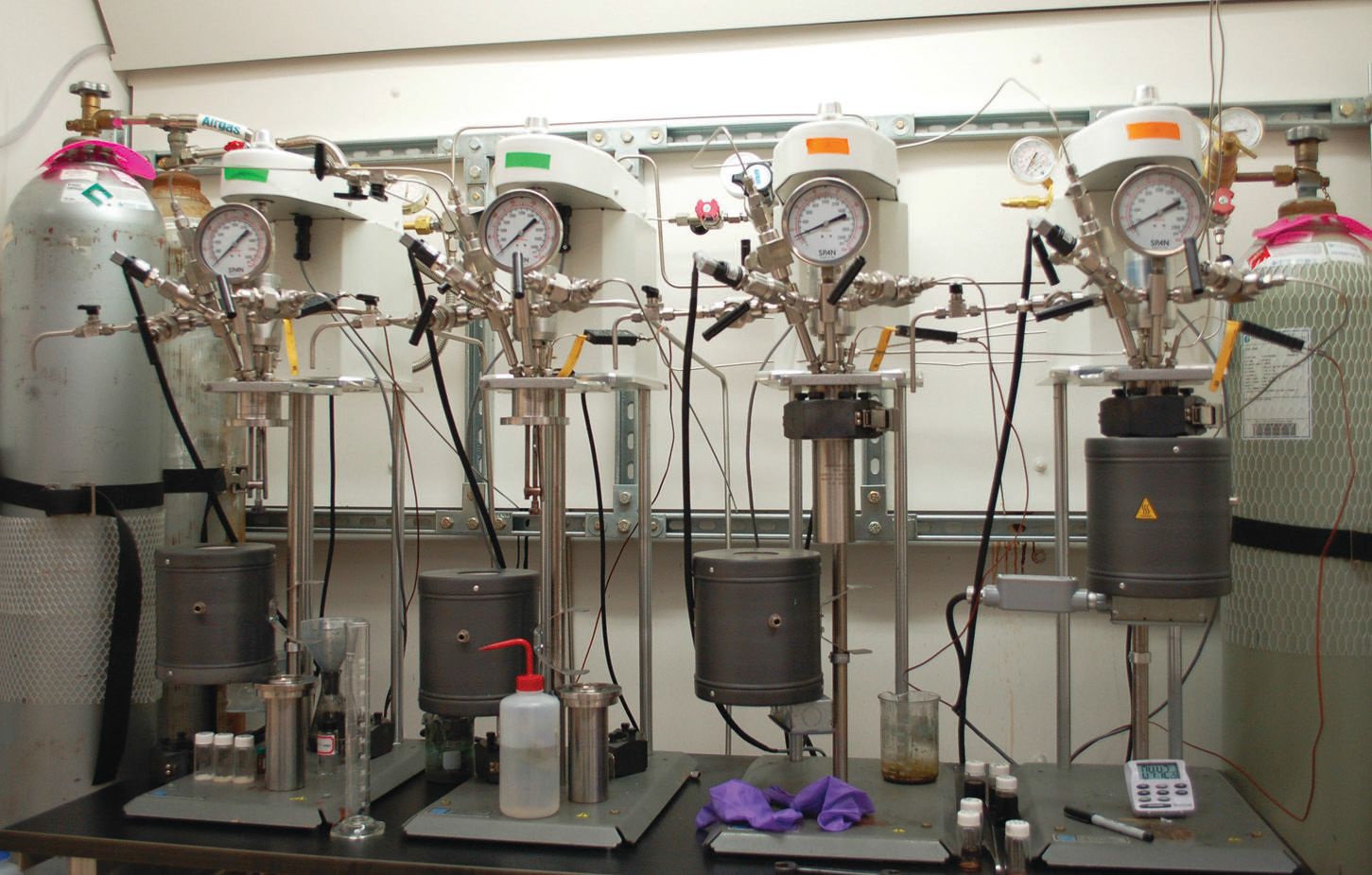Manufacturing tires from renewable resources
Dr. Neil Canter, Contributing Editor | TLT Tech Beat June 2017
The newly developed process produces isoprene from biofeedstocks.
KEY CONCEPTS
•
The current petrochemical manufacturing process for isoprene, used in the manufacture of synthetic rubber, is very inefficient.
•
A hybrid process using a known biological pathway that utilizes glucose has been found to be more efficient.
•
The key step is a dehydra-decyclization process that uses a phosphorus, all-silica zeolite catalyst.
THE ABILITY TO USE RENEWABLE RESOURCES AS ALTERNATIVE PATHWAYS for the development of functional materials is ongoing. Researchers are looking to use biofeedstocks from non-food sources in this effort.
A past TLT article provides an example of how a biofeedstock such as switchgrass is used to develop a material known as bio-oil (
1). This process is accomplished by pyrolyzing the raw materials at 500 C under a nitrogen sparge followed by fractionation of the various product streams formed. The main component, bio-oil, is very complex and contains species such as carboxylic acids, aldehydes, ketones, cyclic ethers and phenolics.
One of the major monomers used in the manufacture of synthetic rubber and other elastomers is isoprene. Polymerization of isoprene produces poly (cis, 1.4-isoprene), which is known as natural rubber.
Manufacture of isoprene has proven to be very inefficient according to Paul Dauenhauer, associate professor, DuPont Young Professor in the chemical engineering and materials science department at the University of Minnesota in Minneapolis, Minn. He says, “The current commercial process involves production of isoprene as a byproduct of the cracking of naphtha and gas oil. In this approach, isoprene is isolated from hundreds of other products and then purified.”
Work has been underway for some time by the tire industry, the major user of natural and synthetic rubbers, to identify an alternative approach. Dauenhauer says, “Efforts have been made to use microbial fermentation with engineered bacteria to produce isoprene. But the necessary productivity has not been achieved with the microbes.”
A new approach has now been developed to produce isoprene from biofeedstocks.
DEHYDRA-DECYCLIZATION
Dauenhauer and his colleagues have combined a known biological pathway with a petrochemical process to produce a hybrid process for manufacturing isoprene. He says, “The biological segment of the process is a very effective fermentation process that converts glucose to itaconic acid or its isomer, mesaconic acid. Using a heterogeneous catalyst at high temperature enables us to achieve high throughput at a low cost.”
The glucose can be extracted from any natural product such as trees or grasses. A two-step sequential hydrogenation is then conducted to produce 2-methyl-1,4-butanediol, which is converted to 3-methyl-tetrahydrofuran in a dehydration, cyclization reaction run at elevated temperature. This sequence was conducted in a high yield at a temperature between 100 C and 200 C using a support catalyst containing 10% platinum and 10% rhenium.
To convert 3-methyl-tetrahydrofuran to isoprene requires ring opening followed by dehydration. Dauenhauer says, “Dehydra-decyclization is a one-pot chemistry process that is very challenging even when the desired product, isoprene, is formed. Isoprene is a very reactive monomer that can further react when it is produced. One of the issues we faced was finding a catalyst that can convert 3-methyl-tetrahydrofuran to isoprene without further reacting with the desired product.”
The researchers used a pulsed microcatalytic reactor to evaluate a large series of catalysts in fixed bed with access to a gas chromatograph. In this fashion, catalysts are evaluated over a temperature range between 200 C and 400 C with the resulting products identified by gas chromatography.
Initial work was conducted with conventional zeolite catalysts, tricalcium phosphate, silica-alumina and niobium oxide. All of them primarily facilitated the production of isoprene but at low yields.
Dauenhauer says, “We then worked with phosphorus containing, all-silica zeolite catalysts known as P-SPP (Phosphorus Self-Pillared Pentasil) that were developed by colleagues at the University of Minnesota. These solid acid catalysts demonstrated strong selectivity in producing isoprene at catalytic efficiencies as high as 90%. The best result we achieved was the formation of 70% isoprene and 30% pentadienes at a conversion between 20% and 25%.”
Figure 3 shows an image of the laboratory stirred-tank reactors used to convert glucose to isoprene. Conversion to polyisoprene used in synthetic rubbers is done through commercial polymerization.
 Figure 3. Isoprene has been produced in a hybrid process from natural products through the use of laboratory stirred-tank reactors. (Figure courtesy of the University of Minnesota.)
Figure 3. Isoprene has been produced in a hybrid process from natural products through the use of laboratory stirred-tank reactors. (Figure courtesy of the University of Minnesota.)
Future work will focus on efforts to optimize the process, including determining how to minimize the byproducts. Dauenhauer says, “We need to better understand what causes the linear pentadienes to form. Our efforts will be directed to finding out what causes the unbranching of the tetrahydrofuran derivative when it undergoes dehydra-decyclization.”
Other issues that will need to be investigated include the dehydra-decyclization mechanism and how the phosphorus, all-silica zeolite catalyst is able to effectively produce zeolite with a low concentration of by-products. Additional information can be found in a recent paper (
2) or by contacting Dauenhauer at
hauer@umn.edu.
REFERENCES
1.
Canter, N. (2013), “Production of bio-oil,” TLT,
69 (4), pp. 10-11.
2.
Abdelrahman, O., Park, D., Vinter, K., Spanjers, C., Ren, L., Cho, H., Zhang, K., Fan W., Tsapatsis, M. and Dauenhauer, P. (2017), “Renewable isoprene by sequential hydrogenation of itaconic acid and dehydra-decyclization of 3-methyl-tetrahydrofuran,”
ACS Catalysis,
7 (2), pp. 1428-1431.
 Neil Canter heads his own consulting company, Chemical Solutions, in Willow Grove, Pa. Ideas for Tech Beat items can be sent to him at neilcanter@comcast.net
Neil Canter heads his own consulting company, Chemical Solutions, in Willow Grove, Pa. Ideas for Tech Beat items can be sent to him at neilcanter@comcast.net.